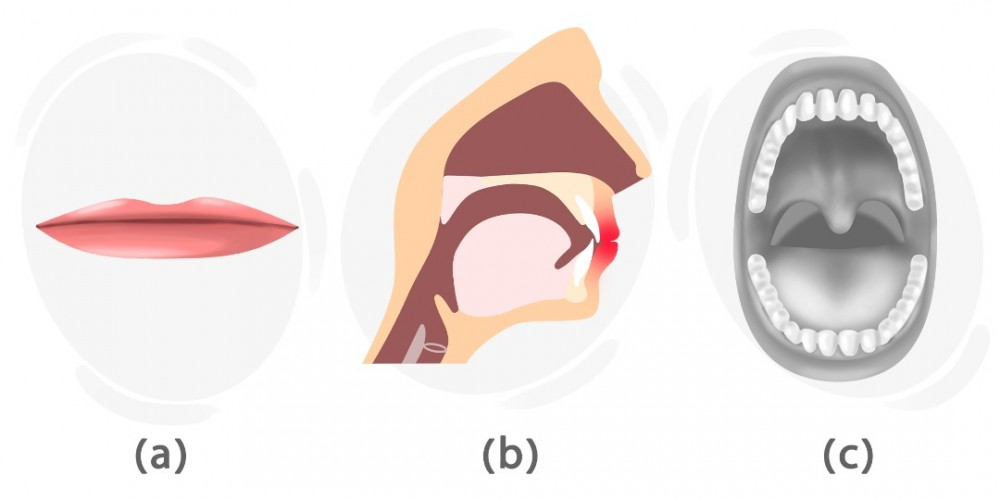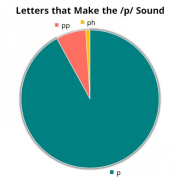How to Pronounce the /p/ Sound

In this lesson, we are going to learn about how we can produce the /p/ sound with the proper articulatory organs.
What Type of Sound Is /p/?
/p/ is a consonant sound in the English language.
How to Produce /p/?


As you can see in picture (a), in order to produce it, the lips come together. Note that we stop the air from coming out, and also, the uvula blocks the nasal passage so as not to let the air out of the nose. As you can see, in picture (b), the teeth are slightly parted. Then, the lips are separated and the air is released. The /p/ sound is produced from the mouth. Note that the air must come out with force so you can hold a piece of paper in front of your mouth to see whether you are doing it correctly or not. The paper must move greatly when the air is released. As you can see in picture (b), the circle in the throat is not red in this sound which means that we do not vibrate our vocal cords. So, it is voiceless.
In picture (c ), we can see that the tongue makes no contact with any part of the mouth. It simply remains in its place because it does not participate in the production of this sound.
/p/ Sound in the Most Common World Languages
As you can see in the table below, most languages have the /p/ sound. Only Arabic does not have it. So, most people can easily produce this sound when learning English. Look:
Existence | Example | |
|---|---|---|
Mandarin | ✔ | 怕 (pà) |
Spanish | ✔ | peso |
Hindi | ✔ | पल |
Bengali | ✔ | পানি |
Portuguese | ✔ | pai |
Russian | ✔ | плод |
Japanese | ✔ | ポスト |
Vietnamese | ✔ | nhíp |
Turkish | ✔ | kap |
French | ✔ | pomme |
German | ✔ | Pack |
Italian | ✔ | papà |
Persian | ✔ | پول |
Standard Arabic | x | - |
Korean | ✔ | 피 |
Indonesian | ✔ | pola |
Filipino | ✔ | pato |
Hungarian | ✔ | pápa |
Dutch | ✔ | plicht |
Polish | ✔ | pas |
Romanian | ✔ | pas |
Swedish | ✔ | apa |
Czech | ✔ | pes |
Greek | ✔ | πόδι |
Ukrainian | ✔ | павук |
Urdu | ✔ | پل |
Listening
Below, there is an audio file that helps you learn the proper pronunciation of the /p/ sound:
Comments
(0)

